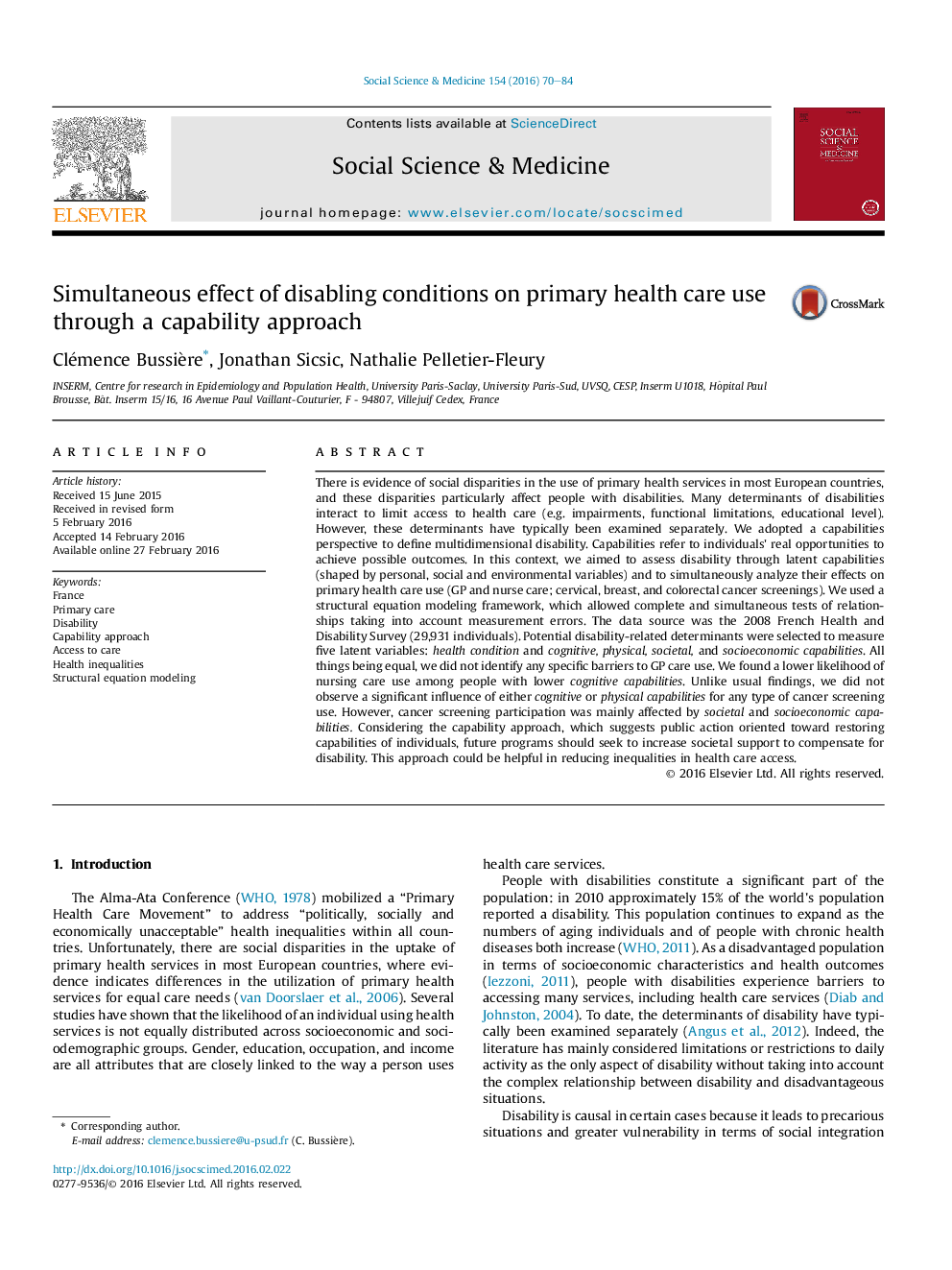| Article ID | Journal | Published Year | Pages | File Type |
|---|---|---|---|---|
| 952222 | Social Science & Medicine | 2016 | 15 Pages |
•Describes the effect of various disability components on primary health care use.•Assesses simultaneously five latent capabilities to define multidimensional disability.•Implements a structural equation model to analyze latent capabilities' impact on health care use.•Shows no effect of either cognitive or physical capabilities on cancer screening use.•Suggests that societal and socioeconomic capabilities are central determinants of use.
There is evidence of social disparities in the use of primary health services in most European countries, and these disparities particularly affect people with disabilities. Many determinants of disabilities interact to limit access to health care (e.g. impairments, functional limitations, educational level). However, these determinants have typically been examined separately. We adopted a capabilities perspective to define multidimensional disability. Capabilities refer to individuals' real opportunities to achieve possible outcomes. In this context, we aimed to assess disability through latent capabilities (shaped by personal, social and environmental variables) and to simultaneously analyze their effects on primary health care use (GP and nurse care; cervical, breast, and colorectal cancer screenings). We used a structural equation modeling framework, which allowed complete and simultaneous tests of relationships taking into account measurement errors. The data source was the 2008 French Health and Disability Survey (29,931 individuals). Potential disability-related determinants were selected to measure five latent variables: health condition and cognitive, physical, societal, and socioeconomic capabilities. All things being equal, we did not identify any specific barriers to GP care use. We found a lower likelihood of nursing care use among people with lower cognitive capabilities. Unlike usual findings, we did not observe a significant influence of either cognitive or physical capabilities for any type of cancer screening use. However, cancer screening participation was mainly affected by societal and socioeconomic capabilities. Considering the capability approach, which suggests public action oriented toward restoring capabilities of individuals, future programs should seek to increase societal support to compensate for disability. This approach could be helpful in reducing inequalities in health care access.
